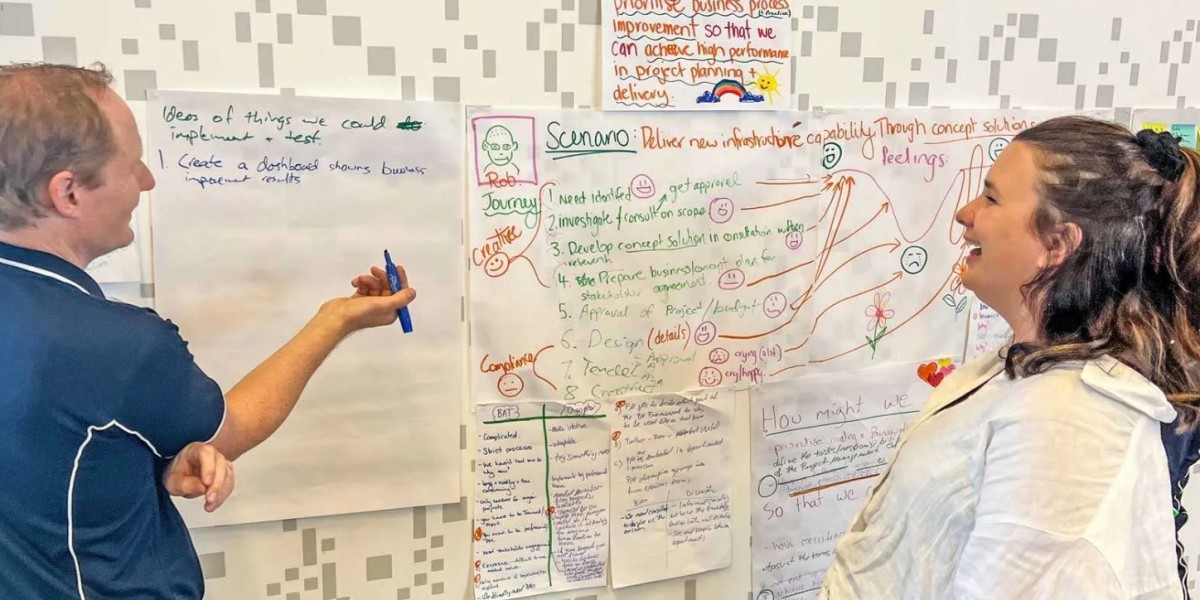In today’s fast-moving world, creative problem-solving is a vital skill. The Design Thinking Workshop offers a hands-on way to unlock innovative thinking, foster teamwork, and create solutions that truly connect with people’s needs. This approach blends creativity with strategy, helping individuals and organisations adapt, grow, and succeed in any industry.
What is a Design Thinking Workshop?
A design thinking workshop is an interactive session that teaches participants how to apply the principles of design thinking to real challenges. It’s not about memorising theory — it’s about learning by doing. Participants engage in activities, group discussions, and rapid prototyping to experience each stage of the process firsthand.
Design thinking focuses on empathy, collaboration, and experimentation. Instead of starting with a solution, you begin by understanding the problem deeply, then explore multiple ideas before choosing the best one.
Why Attend a Design Thinking Workshop?
Workshops provide an immersive experience that goes beyond standard training methods. Here’s why they’re so valuable:
1. Human-Centred Solutions
You’ll learn how to approach challenges from the perspective of the people you’re designing for, ensuring your solutions are relevant and meaningful.
2. Boost Your Creativity
By encouraging brainstorming without judgment, workshops help you break away from old thinking patterns and spark fresh ideas.
3. Enhance Teamwork Skills
Working with a diverse group of participants allows you to share perspectives, build on each other’s ideas, and strengthen collaboration.
4. Practical and Applicable
Everything you learn can be applied to your work, studies, or personal projects immediately.
The Five Stages of Design Thinking
Most workshops guide participants through the following key stages:
1. Empathise
Understand your audience by observing, interviewing, and engaging with them. This stage builds a clear picture of their needs and challenges.
2. Define
Based on your research, clearly state the problem you aim to solve. This focuses your efforts and ensures you address the right issue.
3. Ideate
Generate as many ideas as possible. This stage is about creativity and exploring a wide range of solutions without limiting yourself.
4. Prototype
Build simple, low-cost models of your top ideas. Prototypes make it easier to test concepts and identify what works best.
5. Test
Share your prototypes with users to get feedback. Use this input to refine and improve your solution.
Who Should Join a Design Thinking Workshop?
Design thinking is not just for designers — it’s for anyone who wants to solve problems creatively and effectively. These workshops are ideal for:
Business professionals creating customer-focused strategies
Educators designing better learning experiences
Nonprofits developing impactful community programs
Students improving teamwork and critical thinking skills
Entrepreneurs building products or services that meet real needs
Real-World Impact
Organisations that embrace design thinking often see improved innovation, stronger collaboration, and higher satisfaction among customers and employees. By involving end users in the process and testing ideas quickly, they reduce risks and create solutions that are more likely to succeed.
For individuals, learning design thinking can shift your mindset, making you more adaptable, resourceful, and confident in tackling challenges.
How to Get the Most from Your Workshop
To maximise your experience:
Arrive with an open mind and be ready to explore new ideas
Participate actively in discussions and activities
Be willing to embrace failure as part of the learning process
Listen to others’ perspectives and build on them
The more you engage, the more valuable the workshop will be for you.
Why It Matters Now
In an age of rapid change, the ability to innovate is essential. Businesses, educators, and communities face complex challenges that require fresh thinking and flexible problem-solving. Design thinking provides a clear, structured method for achieving that, while keeping the focus on the people who will use the solution.
Conclusion
A design thinking workshop is more than just training — it’s a creative journey that changes how you think, work, and solve problems. By combining empathy, collaboration, and rapid prototyping, it gives you the tools to design solutions that truly make an impact. Whether you’re a student, professional, or entrepreneur, this approach can transform your ideas into real, meaningful results.








